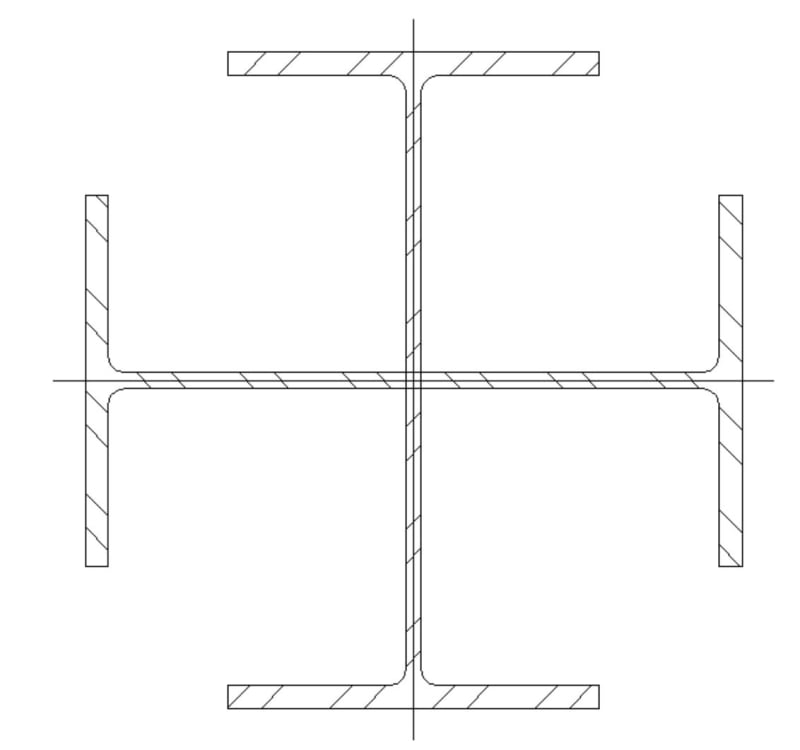WouldveBeenArchitect
Student
- Jan 10, 2023
- 12
I created this account to start a thread at the structural engineering general discussion forum but, as a student, I'm not able to. If any benevolent reader with that ability would like to copy and paste/post this question there, that would be greatly appreciated. If that doesn't happen, I hope some students find enough interest to take the time to reply with their thoughts. I understand these forums are for engineers helping engineers, which isn't the case, but I thought I'd give it a go.
Picture a four-way beam supported by a single central column.
Now imagine a W-beam (W 10x19) 10 feet long with the top flange cut perpendicularly 1 foot away from the ends and the web cut diagonally from that point to the point at the bottom of the web 4 feet away from the ends where the bottom flange is cut. Flip the split sections around so that the top is bottom and remove all 3 bottom flanges. Now join the T-shaped ends of the split sections to the center of the remaining beam having removed the bits of flange that overlap. There should be a square opening above the welded webs equal to the width of the flange.
This is welded to a plain cruciform column with foot long "legs" in each one of the four directions. The beam ends up shaping the typical moment diagram of a cantilever.
Regarding the load, it is quite eccentric. For practical purposes, consider a point load of 3000 lb at the end of each yard long unsupported span.
The short column is to be reinforced with gusset plates where it is reduced from foot long "legs" to a span (9 inches) halfway between the beam and the base plate.
The question is: does the top and only flange of the beam need reinforcement? If so, are there discreet solutions? This is obviously a small project. I'm not sure welding round bars to the fillet between flange and web will do the trick, for example.
Picture a four-way beam supported by a single central column.
Now imagine a W-beam (W 10x19) 10 feet long with the top flange cut perpendicularly 1 foot away from the ends and the web cut diagonally from that point to the point at the bottom of the web 4 feet away from the ends where the bottom flange is cut. Flip the split sections around so that the top is bottom and remove all 3 bottom flanges. Now join the T-shaped ends of the split sections to the center of the remaining beam having removed the bits of flange that overlap. There should be a square opening above the welded webs equal to the width of the flange.
This is welded to a plain cruciform column with foot long "legs" in each one of the four directions. The beam ends up shaping the typical moment diagram of a cantilever.
Regarding the load, it is quite eccentric. For practical purposes, consider a point load of 3000 lb at the end of each yard long unsupported span.
The short column is to be reinforced with gusset plates where it is reduced from foot long "legs" to a span (9 inches) halfway between the beam and the base plate.
The question is: does the top and only flange of the beam need reinforcement? If so, are there discreet solutions? This is obviously a small project. I'm not sure welding round bars to the fillet between flange and web will do the trick, for example.

